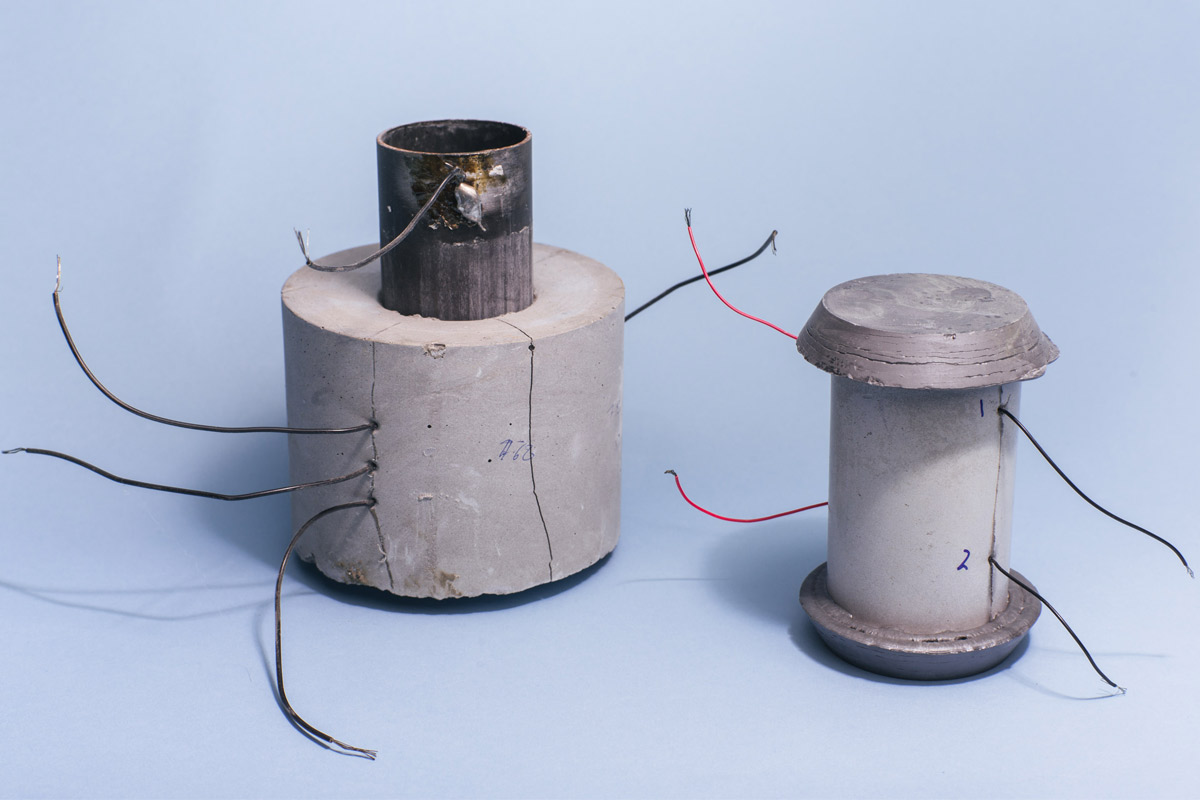A Role For Students

Of course, gap funding, research and start-up space and other support can take an idea only so far.
“There are a lot of very, very good ideas out there,” Krishnamoorti says. “What it takes to make it to market is whether you have the right business plan.”
The University offers help with that, too.
A program at Bauer’s Wolff Center for Entrepreneurship pairs business students with UH researchers, charging the business students with developing a business plan for the faculty-created technology. Some teams include students from the Valenti School of Communication.
While the program, a partnership between the Wolff Center and the Division of Research, gives students a chance to work on real-world businesses, it also helps faculty commercialize their research, as the students investigate market potential, competing products, supply chain issues and viable financial models.
The ultimate goal is to raise investment funding and spin the companies off as UH start-ups.
Vipulanandan, the “smart” cement developer, is among the faculty inventors tapped to work with a student team this year and so far, he has been pleased. “It’s time for us to step up and show what we can do,” he says. “The team asks very good questions.”
They also have done well at several business plan competitions, earning prize money that can be plowed back into the company they named Sensytec.
Kevin Cho, an entrepreneurship student who graduated in May and is serving as the company’s CEO, says the team knew it wanted to work with Vipulanandan’s smart cement as soon as they met with him. The other members are Nick Ravanbakhsh, Dylan Senter and Ody De La Paz.
“It’s the best technology I’ve ever seen,” he says.
The team is targeting offshore oil producers for its initial market, but Cho says other possibilities include roadwork, bridges and dams.
Vipulanandan is scientific adviser to the company, and one of his graduate students, Anudeep Reddy, is lead scientist and technical expert.
Cho likens building a business to his childhood fascination with board games.
“With a business,” he says, “it’s the best board game ever.”
The Wolff Center has connected dozens of students with faculty research and launched a number of startups, but faculty members also take an informal approach to involving students in creating and sharing innovations.
That’s what happened with a smart phone app created a few years ago to deliver real-time updates on ozone levels.
Price, the Honors College faculty member, was teaching a class about the intersections between science and asthma. Geneticists look at it differently than cellular biologists, he notes.
The class really was about different ways to consider a subject, using the chronic respiratory disease asthma as the vehicle. And ozone, triggered mainly by emissions from motor vehicles and industrial plants, can be dangerous for people with asthma.
It isn’t the only risk – Price has continued to work on issues including airborne particulate matter and indoor air quality. But it is a big issue, and the data was relatively easy to obtain. There isn’t the same neighborhood-by-neighborhood data available for many other pollutants, or even pollen.
Data published by state and federal regulatory agencies aren’t broken down by neighborhoods, and they tend to be delayed, Price says. Real-time information would be more useful. And he felt it was a project that could offer a number of roles for students.
It would take money, of course, and Price joined with the American Lung Association to get a $450,000 grant from the Houston Endowment in 2011. The map and a smartphone app – OzoneMap, available for Apple and Android – came out in 2012. Ioannis Pavlidis,
Eckhard-Pfeiffer Professor of computer science at UH, and several of his graduate students worked on it, drawing data from 45 ozone monitors in the Houston region.
About 5,000 people downloaded the app in the first few months, but Price said there are no figures to say how many people continue to use it. He is now planning a map and app to detail multi-particulate pollution. But creating and marketing a technology was never his real goal. Instead, he wanted to deepen the classroom experience.
“I think it’s important to remember that it is enough to educate students,” he says.
That turned out to include creating a product, as students learned from the work of producing the ozone map and app, as well as trying to market it. Sharing the information with the broader public through the app is valuable, too, a reminder of the ways in which innovation springing from a university campus can improve life for the world at large.
“We’re getting students into their career paths, and I do think that’s enough,” he says. “When I’m optimistic, I think we’re going to get people to use the app.”
Next Story:
Heat, High Water and the Quest for Answers
Researchers from across campus are studying our changing climate, with an eye on the future